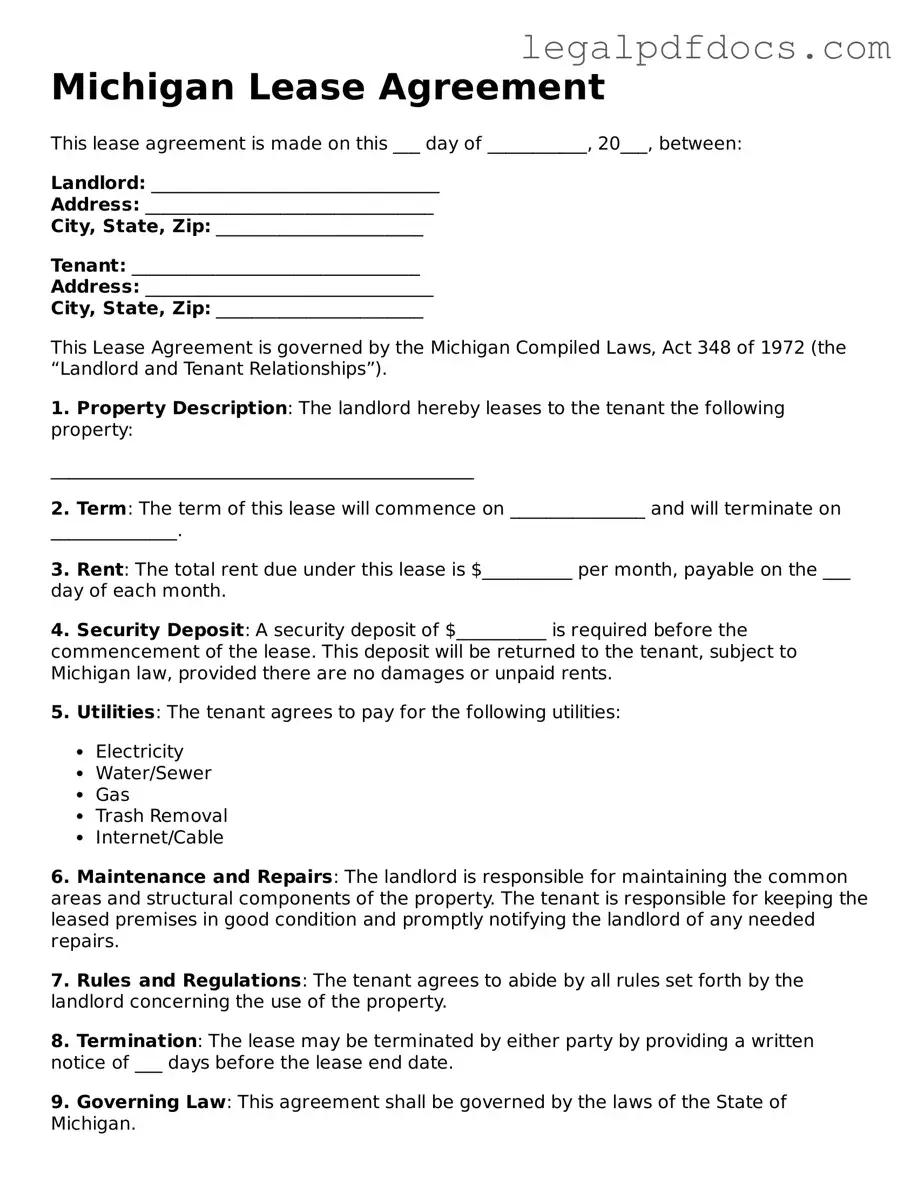Official Lease Agreement Form for Michigan
The Michigan Lease Agreement form is a legally binding document that outlines the terms and conditions between a landlord and tenant for renting a residential property. This form serves to protect the rights and responsibilities of both parties, ensuring clarity in the rental arrangement. For those looking to formalize their rental agreements, filling out the form is a crucial step; click the button below to get started.
Open Lease Agreement Editor Here
